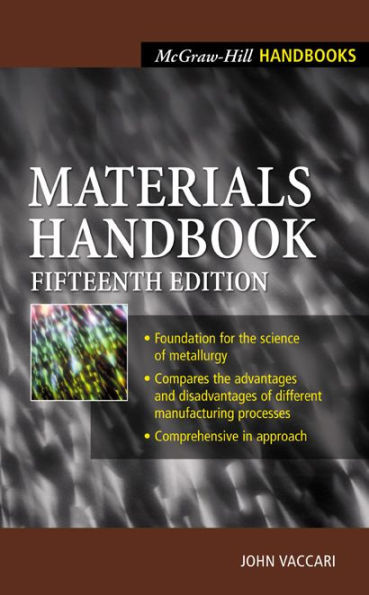Introduced in 1929 and often known simply as "Brady's," this comprehensive, one-volume, 1244 page encyclopedia of materials is intended for executives, managers, supervisors, engineers, and technicians, in engineering, manufacturing, marketing, purchasing and sales as well as educators and students.
Of the dozens of families of materials updated in the 15th Edition, the most extensive additions pertain to adhesives, activated carbon, aluminides, aluminum alloys, catalysts, ceramics, composites, fullerences, heat-transfer fluids, nanophase materials, nickel alloys, olefins, silicon nitride, stainless steels, thermoplastic elastomers, titanium alloys, tungsten alloys, valve alloys and welding and hard-facing alloys.
Also widely updated are acrylics, brazing alloys, chelants, biodegradable plastics, molybdenum alloys, plastic alloys, recyclate plastics, superalloys, supercritical fluids and tool steels.
New classes of materials added include aliphatic polyketones, carburizing secondary-hardening steels and polyarylene ether benzimidazoles. Carcinogens and materials likely to be cancer-causing in humans are listed for the first time.
Introduced in 1929 and often known simply as "Brady's," this comprehensive, one-volume, 1244 page encyclopedia of materials is intended for executives, managers, supervisors, engineers, and technicians, in engineering, manufacturing, marketing, purchasing and sales as well as educators and students.
Of the dozens of families of materials updated in the 15th Edition, the most extensive additions pertain to adhesives, activated carbon, aluminides, aluminum alloys, catalysts, ceramics, composites, fullerences, heat-transfer fluids, nanophase materials, nickel alloys, olefins, silicon nitride, stainless steels, thermoplastic elastomers, titanium alloys, tungsten alloys, valve alloys and welding and hard-facing alloys.
Also widely updated are acrylics, brazing alloys, chelants, biodegradable plastics, molybdenum alloys, plastic alloys, recyclate plastics, superalloys, supercritical fluids and tool steels.
New classes of materials added include aliphatic polyketones, carburizing secondary-hardening steels and polyarylene ether benzimidazoles. Carcinogens and materials likely to be cancer-causing in humans are listed for the first time.

Materials Handbook
1244
Materials Handbook
1244
Product Details
| ISBN-13: | 9780071501842 |
|---|---|
| Publisher: | McGraw Hill LLC |
| Publication date: | 07/09/2002 |
| Series: | Handbook |
| Sold by: | Barnes & Noble |
| Format: | eBook |
| Pages: | 1244 |
| File size: | 8 MB |
